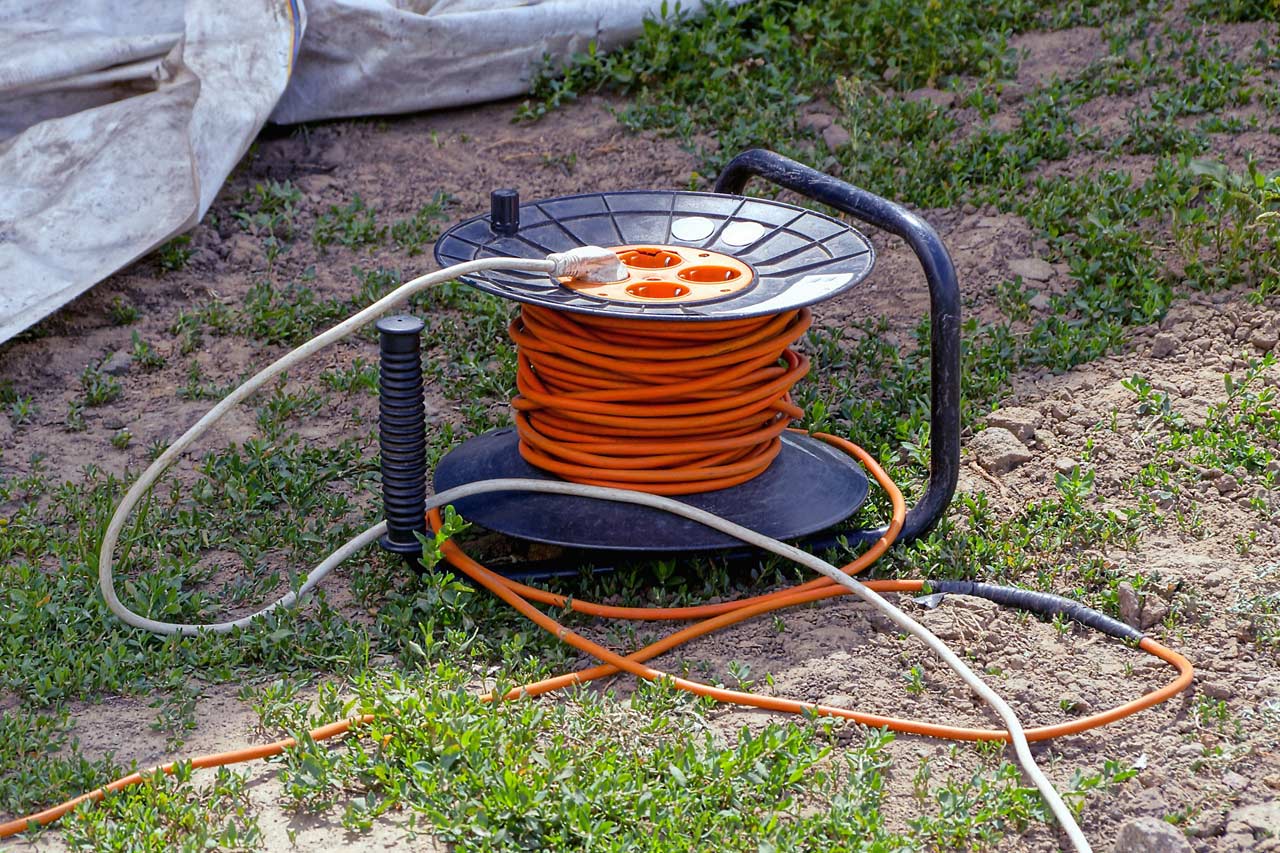Picking the Right Extension Cord for Outdoor Lights

It's important to know that not all extension cords are the same. There are a few, yet significant details many of us overlook that can be hazardous to your home. Let's go over some information to ensure you are choosing the right extension cord for outdoor use.
The Differences Between Indoor and Outdoor Extension Cords
Let's begin with how indoor extension cords are different from outdoor extension cords. Indoor extensions have thin insulation, or jacket, around the wires making them unsuitable for outside use. They are best to use with lamps, floor fans, indoor Christmas lights, and general electronic devices. Outdoor extension cords are designed with stronger outer jackets that help them withstand rougher and wetter conditions. Outdoor cords are broken into 3 categories:
Occasional use cords are best for smaller tools
Frequent use cords are heavier duty, making them a better choice for larger tools and equipment
Rugged cords are for high-amperage tools or construction sites
All extension cords have a rating printed on the jacket. Made up of letters, these codes are used to describe the type of jacket and where the cord can be used. Below show the most common labels:
Letter Meaning
S Flexible cord for general use
W Rated for outdoor use and wet locations
J Hard service; has standard 300 Volt insulation
P Has parallel wire construction
T Jacket made from vinyl thermoplastic
E Jacket made from thermoplastic elastomer rubber (TPE)
O Oil resistant
Make sure to double-check what the jacket is made of. A cord with a "T" label is made with thermoplastic. While thermoplastic is water resistant, it is not good for long-term outdoor use since it can become brittle in cold weather or soft in extreme heat. A better choice for extended outdoor use is a cord with an "E" label. This means the jacket is made from thermoplastic elastomer rubber (TPE), which is resistant to sunlight, UV, and extreme weather conditions.
Extension Cord Terminology
Found on the extension cord's packaging is the maximum amperage. This is the highest amount of power, or current, that the cord can safely handle. Running a device that requires a higher amperage than the cord is rated for can cause the cord to overheat. If you plan on using multiple devices at once, you will want to add up the current requirements for all of the devices to ensure that you do not overload the cord.
The wire gauge is the diameter of the wire. This determines how much current is able to safely pass through the wire. Gauge is measured by American Wire Gauge (AWG) and can be found printed on both the cord jacket and the packaging. Lower AWG numbers are referred to as higher gauges since they are able to handle higher amps. For example, a 16/2-gauge wire has 2 wires with a 16-gauge thickness. Each wire can conduct 10 to 13 amps. The list below shows the common wire gauges and how many amps they can handle:

As you can see, length directly affects how much power is able to reach a device. The current meets increased resistance the further it has to travel, causing the voltage to drop by the time it reaches the device. It is recommended that you buy the length you need without having a lot of excess. If you need a longer cord, purchase one with a larger gauge, such as a 12 or a 10-gauge to help negate the voltage drop.
Most tools in your garage or workshop can be used with a 14-gauge cord. The best choice would be to go with one that is rated for both indoor and outdoor use. Larger tools like an air compressor would need a 10-gauge. For running Christmas lights, you want to make sure that any cord you use is rated for outdoor use. Pick a 16-gauge extension cord for light runs of 25 feet or less and go with a heavier duty 14-gauge cord for runs over 25 feet. Devices that generate heat, such as space heaters, should not be used with extension cords. These devices can pull 15 amps or more, easily overheating cords and potentially creating fire hazards. Devices that cannot be used with extension cords will have clear warning labels.
Check back to see new articles and guides, or feel free to click another article to experience more great insights and advice.



